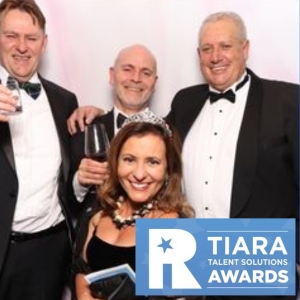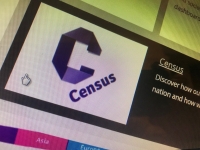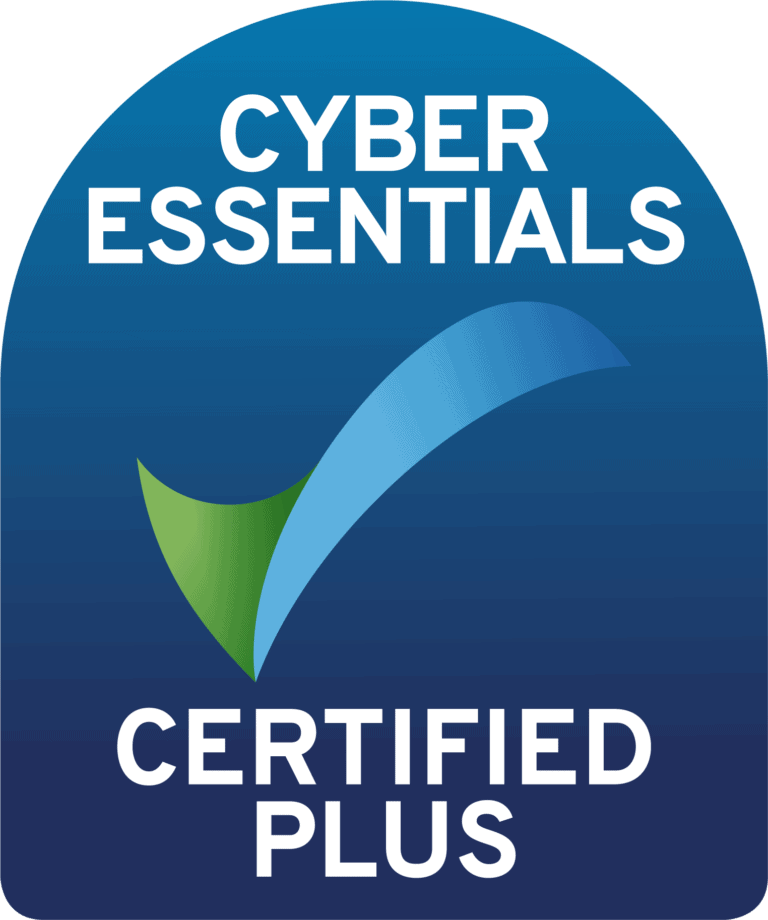Malikshaw Interim
Malikshaw's Commitment to Net Zero 2025
EVISA SOLUTIONS LTD – Carbon Reduction Plan (PPN 006 Compliant)
Supplier Name: EVISA SOLUTIONS LTD
Publication Date: 1st November 2025
Commitment to Achieving Net Zero
EVISA SOLUTIONS LTD is committed to achieving Net Zero emissions by 2030.
Baseline Emissions Footprint
Baseline emissions are a record of the greenhouse gases produced prior to any reduction strategies. They serve as the reference point for measuring future reductions.
Baseline Year: 2022
Additional Details relating to the Baseline Emissions calculations:
• Calculated in accordance with the GHG Protocol Corporate Accounting and Reporting Standard.
• Emissions reported in tCO2e using UK Government conversion factors.
• Includes all seven greenhouse gases named under the Kyoto Protocol: CO₂, CH₄, N₂O, HFCs, PFCs, SF₆, and NF₃.
• Operational boundary defined using the operational control methodology.
Baseline Year Emissions:
Emissions Total (tCO2e)
Scope 1 0
Scope 2 55.236
Scope 3 – Category 1: Purchased goods & services 2.098
Scope 3 – Category 4: Upstream transport & distribution 0.839
Scope 3 – Category 6: Business travel 0.420
Scope 3 – Category 7: Employee commuting 0.420
Scope 3 – Category 13: Downstream leased assets 0.418
Scope 3 Total 4.195
Total Emissions 59.431
Current Emissions Reporting
Reporting Year: 2024
Emissions Total (tCO2e)
Scope 1 0
Scope 2 38.731
Scope 3 – Category 1: Purchased goods & services 1.244
Scope 3 – Category 4: Upstream transport & distribution 0.498
Scope 3 – Category 6: Business travel 0.249
Scope 3 – Category 7: Employee commuting 0.249
Scope 3 – Category 13: Downstream leased assets 0.248
Scope 3 Total 2.488
Total Emissions 41.219
Emissions Reduction Targets
In order to continue progress toward Net Zero, EVISA SOLUTIONS LTD has adopted the following carbon reduction targets:
• Projected emissions reduction to 39 tCO2e by 2027, representing a 34.55% reduction from the 2022 baseline.
Carbon Reduction Projects
Completed Carbon Reduction Initiatives
The following environmental management measures and carbon reduction projects have been implemented since the 2022 baseline:
• Transition to a fully electric company car fleet
• Reduction in company travel through policy changes
• Increased remote and hybrid working
• Energy efficiency improvements to office lighting and heating systems
Impact: 5 tCO2e reduction (8.5% vs. 2022 baseline)
Future Carbon Reduction Initiatives
EVISA SOLUTIONS LTD plans to implement further carbon reduction initiatives, including:
• Supplier engagement and sustainability requirements to reduce Scope 3 emissions
• Installation of renewable energy sources in offices
• Adoption of carbon offsetting for unavoidable emissions
• Expansion of digital working tools to reduce travel-related emissions
Methodology
• Calculated in accordance with the GHG Protocol Corporate Standard.
• Operational boundary defined using operational control methodology.
• Scope 1 and Scope 2 emissions reported per SECR requirements; five Scope 3 categories included per PPN 006 guidance.
• Emissions measured in tCO2e across all Kyoto Protocol gases.
Declaration and Sign Off
This Carbon Reduction Plan has been completed in accordance with PPN 006 and associated guidance for Carbon Reduction Plans.
Emissions have been reported and recorded in line with the GHG Reporting Protocol and UK Government emission conversion factors. Scope 1 and Scope 2 emissions have been reported per SECR requirements, and the required subset of Scope 3 emissions have been reported per the GHG Corporate Value Chain (Scope 3) Standard.
Signed on behalf of the Supplier:
Robert Shaw
Partner | Public Sector
Date: 1st November 2025
The Side-Hustle Effect: How Modern Workforces Are Evolving
The 9 to 5 is no longer the default for many professionals. Today, employees wear multiple hats—full-time worker, freelancer, side-project innovator, mentor, and sometimes entrepreneur—all at once. Side projects, freelance gigs, and passion ventures are becoming standard components of working life. This is not a passing trend. The side hustle is reshaping careers, influencing loyalty, and forcing organisations to rethink how they manage talent.
Side hustles offer more than extra cash. They allow individuals to pursue passions, test new skills, and explore career changes without leaving their main role. For interims, these additional roles are particularly relevant. Flexibility is a hallmark of interim work, and side projects enable professionals to bridge contracts, stay marketable, and broaden their skillset. Treat side projects as a showcase of versatility, but set clear boundaries to protect core assignments, avoiding burnout.
Candidates who approach side hustles strategically can turn them into powerful CV assets, demonstrating initiative, entrepreneurial spirit, and transferable skills. Framing is key: side projects should complement, not compete with, main responsibilities.
For hiring managers, side hustles are both a challenge and an opportunity. There are risks around focus, burnout, and conflicts of interest, but employees wearing multiple hats often bring fresh thinking and innovative ideas back into the organisation. Focusing on outcomes rather than hours and encouraging flexibility transforms potential risk into advantage.
Organisations that navigate this trend successfully provide flexible hours, remote options, and clear moonlighting policies. They also harness the skills and energy developed through side projects, turning them into innovation opportunities. Side hustles are here to stay. Companies that balance freedom with accountability and encourage growth while protecting productivity will win loyalty, creativity, and engagement.
Ready to explore how your organisation can embrace modern work trends and get the most from your talent?
Five Skills AI Can't Replace
AI and automation are reshaping the workplace. But while systems are getting faster and smarter, some of the most valuable skills in today's market have nothing to do with machines. In fact, they're the ones machines still can't touch and likely never will.
Whether you're an interim professional stepping into a complex transformation, or building a project team to deliver one, it's increasingly clear that soft skills aren't just "nice to have." They're business critical.
The Five Skills That Aren't Going Anywhere
These are the traits and behaviours that consistently drive real-world results in organisations going through change, especially in environments where pressure, ambiguity and pace are the norm.
1. Critical Thinking
AI can process data. It can't interpret political nuance, regulatory context or unintended consequences. Critical thinking is essential for shaping decisions that stick. It's what allows someone to walk into a tangled situation, ask the right questions and spot what others have missed.
2. Empathy
Particularly in transformation programmes, empathy isn't about being soft. It's about reading the impact of change on people and adjusting your approach accordingly. Understanding how teams feel, and why they might be resistant, is the starting point for getting them on board.
3. Creativity
Automation thrives on patterns. Creativity thrives on ambiguity. Solving a legacy process problem or finding new ways to deliver under constraints demands the kind of thinking that isn't rule-based. That's where experienced professionals shine by applying creativity to real-world complexity.
4. Adaptability
No two projects are the same and no plan survives first contact. The ability to flex, to recalibrate in response to new data, changing priorities or political realities, is what keeps momentum going. Interims know this better than most. It's core to the way they work.
5. Influence and Communication
Stakeholder alignment isn't something you can automate. You still need someone in the room who can explain the bigger picture, build trust across departments and turn strategic goals into local relevance. Especially in complex programmes, influence is what gets things moving.
How Interims Can Show They Have These Skills
These traits rarely show up in a CV line or a project plan. So how do you prove them?
Start with evidence over adjectives. It's not enough to say you're adaptable or emotionally intelligent. Point to examples where that adaptability made a difference, or where empathy changed the direction of a programme. Build out your portfolio with stories and outcomes, not just job titles.
Ask for feedback on these qualities, not just delivery metrics. Testimonials from sponsors, peers or stakeholders can offer real insight into how you show up, not just what you deliver.
And finally, frame your soft skills as part of your core value. They're not the icing. They're part of what allows you to operate effectively in high-stakes, high-complexity environments.
Real-World Example: Turning Around a Government Programme
One of the clearest demonstrations of this came through a Malikshaw interim recently placed in a UK government department. Brought in to oversee a stalled digital transformation programme, they quickly identified that the problem wasn't the system. It was adoption.
Front-line staff didn't trust the rollout. They felt excluded from decisions and confused about how the changes would affect their day-to-day work. Rather than pushing the implementation forward, the interim stepped back. They spent time across teams, held listening sessions and surfaced concerns that hadn't reached the leadership level.
They adapted the training offer to reflect the reality of how different functions operated. They also built a network of peer champions from across the department, trusted individuals who could speak credibly to colleagues and act as bridges between programme and operations.
Crucially, the interim reframed the challenge at board level, helping senior leaders see that they weren't facing a technical failure, but a cultural one. Within ten weeks, user adoption rose from 20 percent to over 80. No new budget. No additional tech. Just better engagement, delivered through human insight and influence.
That's what makes these skills future-proof. And what makes the right interim a critical part of delivering successful transformation.
Hiring for These Skills in Project Teams
For those building transformation teams, it's just as important to look for these qualities as it is to check off technical experience.
When assessing candidates, especially for interim or contract roles, don't just focus on systems knowledge or delivery frameworks. Ask about how they've handled resistance. How they've adapted under pressure. How they've built relationships quickly in new environments.
And where possible, use experienced interims to seed these qualities into your wider team. They often bring a level of maturity and situational awareness that helps stabilise fast-moving programmes and sets the tone for others.
Final Thought: Soft Skills, Real Impact
The most valuable skills in complex change environments are the ones that can't be codified. The ability to think critically, build trust, adapt quickly and communicate clearly isn't just a professional strength. It's a requirement.
For interims, these are often the differentiators. For those building teams, they're the foundations.
If you're focused on future-proofing your programme or your own career, start with the skills the machines haven't mastered.
If you're ready for a new challenge or perhaps you're building a new team, we'd love to hear from you.
DIVYA ANAND
My Biography
A passionate recruiter focused on helping people find roles where they can thrive and helping businesses build strong, high-performing teams.
My Areas of Expertise
Executive Search & Leadership Hiring
Inclusive Talent Acquisition
Market Insights & Talent Strategy
My Languages
English
My Interests
Literature
Travel
The Rise of Remote-First: Leading Across Time Zones

The way we work has changed and so has the way we lead.
Remote and hybrid teams are no longer a temporary fix. For many organisations, especially those delivering large-scale transformation programmes, they’ve become the norm. At Malikshaw, we’ve seen this shift up close over the last few years, as public sector delivery models have expanded to include increasingly distributed teams, often made up of permanent staff, interims, contractors and delivery partners.
These teams are spread across different locations, time zones and working patterns, yet they’re expected to align quickly and deliver with precision. Leading in this environment isn’t just about being a good communicator. It’s about setting up structure, expectations and culture in a way that works, even when people rarely meet in person.
This change is especially visible in the public sector, where the scope of programmes has grown. Timelines are tighter, transformation goals are more ambitious, and delivery teams have to scale fast. That often means drawing on short-term or specialist resource. Done well, it’s a flexible, high-impact model. But without the right kind of leadership, things can slow down fast.
So what does remote-first leadership look like?
It’s not about recreating the office virtually. It’s about designing the way work happens when people aren’t in the same place or working at the same time. That might sound obvious, but it often means rethinking some very established habits.
Some key things make a real difference:
- Encouraging asynchronous communication, so work doesn’t stop when someone logs off
- Making roles, goals and expectations clear and easy to access
- Focusing on outcomes over visibility — trust that people are delivering, even if you can’t see them doing it
- Including interims and contractors in key conversations and team rhythms
- Building feedback and reflection into how the team operates
This kind of leadership builds trust, avoids duplication and gives teams the freedom to get on with the work. It’s also the best way to make sure that all contributors — not just permanent staff — are part of the delivery culture.
Tools help, but the real shift is in mindset. Remote-first leadership is about being deliberate. It’s about understanding how people work best when they’re not in the same room, and making sure that clarity, communication and connection aren’t left to chance.
It also helps avoid some of the common pitfalls of remote delivery. Without it, decisions stall, priorities blur and key contributors can feel isolated. When teams are under pressure to deliver, these small breakdowns can quickly become major risks.
Looking ahead, remote-first ways of working are here to stay. Not every team will be fully remote forever, but flexibility, mobility and distributed delivery are now built into how programmes run. The challenge isn’t whether remote teams can succeed — it’s how we lead them effectively.
At Malikshaw, we continue to work with organisations navigating exactly this space — building remote-first teams, integrating interims and specialists, and delivering transformation across complex, fast-moving environments. It’s clear that strong leadership is what ties all of this together.
Getting it right is no longer a nice-to-have. It’s a core part of making modern delivery work.
Signed, Sealed, Stalled: Why Good Onboarding Matters
You’ve spent time and money hiring the right person. The interviews are done, the offer’s accepted, and the start date is in the diary. But too many teams assume the hard work is over at that point, when in reality, it’s only halfway.
Poor onboarding is one of the most common reasons for early leavers, slow starts, and frustrated teams. It’s particularly damaging in consultancy and interim work, where people are brought in to hit the ground running and deliver from day one. In transformation programmes, where complexity is high and timelines are tight, even small onboarding gaps can have serious consequences.
The problem isn’t always obvious. Poor onboarding often hides in the background. Things like no contact between offer and start date, unclear expectations, or basic tools and systems not being ready. Or a lack of context, no real introduction to the team, and that all-too-common "sink or swim" handover. These moments add up and send a message: we weren’t ready for you.
That message has a cost. Replacing a leaver can easily exceed £30,000. Productivity loss is even harder to quantify, but very real. Most new hires take several months to get fully up to speed. In public sector programmes, there’s the added risk of reputational damage and slower delivery. And for teams already stretched, a poor onboarding experience doesn’t just affect the new hire. It pulls others off track too.
This is especially true for interim professionals. There’s a myth that experienced contractors don’t need onboarding and can just “crack on”. But even the best interims need clear objectives, political context, and a sense of who’s who in the team. They need to know what's been tried before and why it did or didn’t work. Without this, time is lost. Mistakes are repeated. Confidence suffers, both theirs and yours.
In transformation work, those early days matter. If someone spends the first two weeks figuring out basics that should have been clear on day one, that’s a red flag. Not on them, but on the process.
So how do you fix it?
- Start before Day One. A welcome email, a named contact, and confirmation that tech and systems will be ready.
- Make the first week feel structured. Share team charts, key contacts, delivery plans or timelines. Even for interims, a light-touch onboarding checklist helps.
- Assign a buddy or go-to person who isn't their line manager.
- Set a few clear goals for the first week and month, not just a list of admin tasks.
- Book regular check-ins. Not just to ask how it’s going, but to find out what’s unclear, what could be better, and what to fix next time.
These aren’t big asks, but they make a big difference. Done well, onboarding gives people the confidence and clarity to start delivering quickly. It builds trust. It protects the investment you’ve made in hiring and the outcomes you need to deliver.
If you're hiring for transformation or managing contract teams, onboarding isn’t a nice-to-have. It’s part of delivery.
Want to improve onboarding across permanent, interim, and consultancy roles? We help organisations build fast, effective onboarding processes that set people — and projects — up for success.
Get in touch to find out how we can help.
The Skill Shift : Hiring for What Matters

Lots of organisations are already thinking about hiring based on skills rather than just job titles. Some have made great progress, others are still working out how to make the shift. Whether you’re just starting to explore this or want to sharpen how you do it, here’s a straightforward look at why focusing on skills really makes a difference for project teams — and some practical tips to get there.
Hiring by job title alone can often miss the mark, especially when project needs shift and change. What really matters is the actual skills people bring. Instead of trying to fit someone into a fixed role, ask: what do we really need this person to do?
For instance, you might not need a full-time business analyst but someone who’s good at engaging stakeholders, gathering requirements, and comfortable working in an agile way. When you focus on skills, you’re more likely to find the right person — someone who can get the job done and adapt as things change.
This matters even more on project teams. Projects don’t always follow a neat, predictable path, so having people whose skills match the current needs is a much better bet than sticking rigidly to fixed roles.
A local council we know was rolling out a big digital upgrade. They needed skills in data migration, cybersecurity, and user-centred design. Those skills don’t always fit neatly under one job title but were absolutely vital for success.
If you’re thinking about making or fine-tuning this shift, here are a few simple steps to help:
- Start with a skills audit. Take a clear look at your team or upcoming project. What skills are really important? Where might you have gaps? A workshop or skills matrix can be surprisingly helpful.
- Write job specs that focus on skills. Instead of long lists of duties, focus on what outcomes you want and the key skills needed to get there. Keep it clear and straightforward.
- Change how you assess candidates. Make sure interviews and tests look for the skills that matter. Sometimes practical tasks or real-life scenarios tell you more than traditional questions.
One word of caution: avoid vague buzzwords like “strategic thinker” unless you can explain what that actually means in your context. Also, bring your HR and procurement teams along early — making sure everyone’s on the same page saves time and headaches later.
At the end of the day, skills-based hiring isn’t about ignoring job titles. It’s about looking beyond them to what really matters — having the right people doing the right work.
If you’re working on a project and want to rethink how you hire, Malikshaw is here to help you focus on skills that lead to real outcomes, not just matching CVs to job titles.
Celebrating Excellence at the TIARA Talent Solutions Awards Europe 2025
London, 25 September 2025 — Malikshaw was proud to be represented at the prestigious TIARA Talent Solutions Awards Europe 2025, where the best in recruitment process outsourcing and talent solutions gathered to celebrate innovation, impact, and excellence.
Our very own Rob Shaw and Marta Ortigas joined our partners at Resourgenix, who were shortlisted for the highly competitive Challenger Award — a category that recognises ambitious and high-growth talent solutions providers making a real impact in the market.
While Resourgenix narrowly missed out on the trophy this time, the evening was a celebration of partnership, performance, and progress. We were thrilled to see several of our industry peers receive well-deserved recognition:
- AMS triumphed in not one, but two major categories:
The Bullhorn Long-Term Partnership Award
The Talent Attraction Strategy of the Year
AMS were also highly commended in several other categories, highlighting their continued innovation and impact across the sector. - Special congratulations also go to Louise Shaw, Managing Director of OMNI RMS, who was awarded the evening’s most prestigious individual honour:
Talent Solutions Leader of the Year – a testament to her exceptional leadership and influence in the talent space.
Rob Shaw commented:
“Events like the TIARAs are a great reminder of the strength and innovation across the talent solutions landscape. It was an honour to be there supporting our partners, and to celebrate the achievements of so many leaders and teams driving the industry forward.”
Resilience by Design
If the last few months have taught us anything, it’s that the things we once assumed were fixed, permanent, and stable can turn upside down in an instant.
The American political landscape has long been associated with stability — maybe even a certain reluctance to change. But lately, it’s taken an unusually unpredictable turn, almost like something out of a novel. Institutions once seen as untouchable are being questioned. Alliances are shifting. And the basic rules of the system seem open to renegotiation.
Watching a major Western power develop an appetite for challenging its own foundations is a striking reminder that even the systems we assume are permanent can, in fact, change.
And if that’s true for governments and empires, it’s doubly true for organisations — especially those under pressure, facing sudden change, and expected to deliver without pause.
For many in the UK, the NHS is the one institution they’d name as the most dependable. A public service that, for nearly 80 years, has symbolised stability, safety, and service. And yet, behind the scenes, the NHS is increasingly run on borrowed time — and borrowed people.
Right now, as you read this, thousands of agency nurses are keeping hospital wards running. Locum GPs and surgeons are stepping into overstretched rotas. Temporary admin staff are handling the back-office load. Interim transformation leads are working across trusts to deliver change at pace. NHS England reported over £10 billion was spent on agency and bank staff in the last full year alone — a figure that continues to rise. In some departments, up to 40% of clinical shifts are covered by temporary or external staff.
An institution built for constancy is now reliant on augmentation to function.
It’s easy to view these numbers as a red flag — and in some ways, they are. But there’s another story here. One about how, when the system comes under pressure, leaders adapt. They go to the market. They bring in specialists. They create short-term flexibility inside long-term structures. And sometimes, that’s exactly what makes a transformation succeed.
Remember 2020? When the pandemic hit and the NHS stood on the brink, something extraordinary happened. In just nine days, the ExCeL Centre in London was transformed into a functioning Nightingale Hospital, with 4,000 beds, oxygen piping, and full ICU capability. It was a feat of speed, scale, and coordination. But what made it work wasn’t just the logistics — it was the augmented workforce behind it.
Hundreds of clinicians, volunteers, ex-military planners, private contractors, and retired NHS staff came together, under a single transformation mission, to get it done. They weren’t permanent. They weren’t part of a long-term workforce plan. But they were the right people at the right time. And that’s precisely the point.
Just as Manchester City’s transformation hinged on a manager who knew exactly what kind of team he needed, the NHS’s use of resource augmentation only works when leaders are clear about three things: where the gaps are, what good looks like, and how to build momentum quickly. (We could just as easily have chosen Arsène Wenger or Brian Clough — but the principle remains.)
The difference between smart resource augmentation and reactive firefighting comes down to intent and clarity. When trusts know what capability they need — whether it’s a trauma surgeon for a two-week stretch or a digital PMO for a six-month rollout — they can build the solution around that need, rather than be overwhelmed by it.
Some NHS trusts have gone further. They’ve embedded flexible resourcing models into their transformation programmes, building blended teams of permanent staff, interims, and third-party specialists. And when they do it well, something interesting happens: speed increases, burnout decreases, and outcomes start to move. It’s not perfect. But it’s progress.
Too many transformation programmes are built on the assumption that the team you start with will be the team you finish with. That your people won’t leave. That the world won’t change. That no new skills will be needed halfway through. But reality doesn’t work that way.
Manchester City didn’t rise through the ranks by relying only on what they had in-house. And the NHS doesn’t save lives every day without drawing on some of the most agile, capable, and committed external professionals in the UK.
As ever, it’s not the model — it’s the mindset.
The most successful transformations treat augmentation as a strategic capability, not a desperate measure. They build a clear case for where and why it’s needed. They set up integration mechanisms so augmented teams feel part of the mission. They keep internal leaders accountable. And they use augmentation not just to fill gaps, but to accelerate capability.
In the same way a Prime Minister assembles a Cabinet with the right portfolios — or a football manager recruits for a system rather than a star — the best transformation leaders build teams designed to win now, not just one day.
There are no permanent teams. Only teams fit for purpose today.
In a world where even governments are learning that they can’t control everything, the ability to augment, adapt, and assemble the right people at the right time might just be the most important transformation skill there is.
The NHS, for all its challenges, shows us that sometimes, borrowing strength is the most permanent kind of resilience there is.
Strange But True: 6 Unusual Jobs
(and what they teach us about interim work)
Some jobs sound made up. Water slide tester. Ostrich babysitter. Pet food taster. And yet, every one of them exists because a gap needed filling and someone had the skills to step in.
That's exactly what happens in interim roles. When a public service is under pressure, when a transformation is faltering, or when specialist capability is missing, organisations need people who can land fast, think differently and deliver results.
So, what can the world's oddest jobs teach us about the mindset needed for successful transformation? Quite a bit, actually.
1. Water Slide Tester
Yes, someone is paid to travel the world testing water slides for speed, safety, and (crucially) fun. They're assessing user experience under pressure — and often at speed — before anyone else goes near it. That's not far from what interims do during service redesign or system change: pressure-testing the new model before it's fully rolled out.
2. Iceberg Mover
In remote waters, teams are occasionally hired to divert icebergs from shipping lanes or oil rigs. It's niche, reactive and mission-critical — just like being brought in to stabilise a transformation programme before it hits a crisis point. Interims are often asked to act quickly, shift direction, and prevent long-term damage.
3. Professional Mourner
In some cultures, actors are paid to attend funerals and express emotion on behalf of others — not theatrics, but presence, empathy and support. Transformation isn't just technical. It's emotional, especially when structures shift or jobs are at stake. Great interims understand how to hold space, communicate with care, and support teams through uncertainty.
4. Pet Food Taster
It's real and it's about quality assurance, however unglamorous. Someone has to deal with the parts of the job that others avoid. The best interims often take on the work no one else wants: legacy system audits, failed procurements, cultural clean-ups. It's not shiny, but it's essential to lasting change.
5. Ostrich Babysitter
On some farms, people are hired to supervise young ostriches — chaotic, unpredictable, and prone to running in the wrong direction. That sounds a lot like managing stakeholder groups during complex change. Good interims bring calm, structure and momentum — even when emotions are high and direction is unclear.
6. Ethical Hacker
Once considered fringe, now a key part of security strategy. Hired to break into systems to find weaknesses before someone else does. In transformation work, interims often act as a critical friend — exposing gaps, surfacing risks, and offering solutions while there's still time to act.
What's the takeaway?
All of these unusual jobs exist for one reason: someone saw a need and stepped into it with clarity, skill and confidence. That's exactly what the best interim professionals do. They don't just manage projects, they solve problems, steady teams, and move organisations forward when it's needed most.
At Malikshaw, we've spent over 20 years working with interim specialists across central and local government. Whether it's stabilising services, leading transformation or filling critical capability gaps, we support public sector clients with people who know how to land fast and make a difference, even in the most unusual circumstances.
We're featured on multiple procurement frameworks and continue to support public service leaders with the people who make change happen.



















